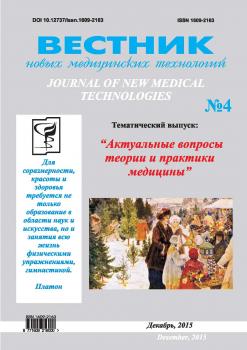Today the formalization of the description of the evolving system doesn’t exist in biology. But if a biosystem is described by a state vector x=x(t)=(x1, x2, …, xm)T in multidimensional phase space, notions of speed and acceleration for the description of quasi-attractor’s motion can be introduced. Vector x(t) moves constantly and chaotically inside the quasi-attractor, i.e. dx/dt≠0 is constant. With age these quasi-attractors show translational motion in phase space for which the model as an dx/dt=(a-bx)x is created and speed V=dx/dt and acceleration a=dV/dt are determined for evolution of biosystems. The current paper presents concrete examples of age-related changes of quasi-attractor’s parameters (two-dimensional phase space) that should be considered as an evolution of vector of cardiorespiratory system in six-dimensional phase space. Models of such dynamics are discussed according to quasi-attractor’s parameters that allow to calculating speed and acceleration of evolution in some integrative values.
biosystem, the phase space of states, evolution.
1. Anokhin P.K. Kibernetika funktsional´nykh sistem. M.: Meditsina, 1998. 285 s.
2. Bernshteyn N.A. Biomekhanika i fiziologiya dvizheniy / Pod red. V. P. Zinchenko. M.: Izd-vo instituta prakt. psikhologii; Voronezh: NPO “MODEK”, 1997. 608 s.
3. Gavrilenko T.V., Es´kov V.M., Khadartsev A.A., Khimikova O.I., Sokolova A.A. Novye metody dlya gerontologii v prognozakh dolgozhitel´stva korennogo naseleniya Yugry. Uspekhi gerontologii. 2014. T. 27. № 1. S. 30-36.
4. Es´kov V.M. Avtomaticheskaya identifikatsiya differentsial´nykh uravneniy, modeliruyushchikh neyronnye seti. Izmeritel´naya tekhnika. 1994. № 3. S. 52-57.
5. Es´kov V.M. Filatova O.E. Komp´yuternaya identifikatsiya ierarkhicheskikh kompartmentnykh neyronnykh setey. Izmeritel´naya tekhnika. 1994. № 8. S. 27-30.
6. Es´kov V.M., Khadartsev A.A., Es´kov V.V., Fi-latova O.E. Osobennosti izmereniy i modelirova-niya biosistem v fazovykh prostranstvakh sostoyaniy. Izmeritel´naya tekhnika. 2010. № 12. S. 53-57.
7. Es´kov V.M., Khadartsev A.A., Es´kov V.V., Dzhumagalieva L.V. Nauka o zhivom i filosofiya zhivogo v interpretatsii V.I. Vernadskogo i sovre-mennoy teorii khaosa-samoorganizatsii kak osnova tret´ey paradigmy estestvoznaniya. V.I. Vernad-skiy i noosfernaya paradigma razvitiya obshchestva, nauki, kul´tury, obrazovaniya i ekonomiki v XXI veke / Pod nauch. red. A.I. Subetto i V.A. Shamakhova. V 3-kh tomakh. Tom 2. SPb.: Asterion, 2013. S. 188-208.
8. Es´kov V.M., Es´kov V.V., Gavrilenko T.V., Zimin M.I. Neopredelennost´ v kvantovoy mekhanike i biofizike slozhnykh sistem. Vestnik Moskovskogo un-ta. ¬Ser. 3. Fiz. Astron. 2014. № 5. S. 41-46.
9. Churchland M.M., Cunningham J.P., Kauf-man M.T. Neural population dynamics during reaching. Nature. 2012. V. 487. P. 51-56.
10. Eskov V.M. Models of hierarchical respiratory neuron networks. Neurocomputing, 1996. V. 11. N 2-4. P. 203-226.
11. Eskov V.M. Computer technologies in stability measurements on stationary states in dynamic biological systems. Measurement Techniques. 2006. V. 49. N. 1. P. 59-65.
12. Eskov V.M., Filatova O.E. Characteristic fea-tures of measurements and modeling for biosystems in phase spaces of states. Measurement Techniques (Med-ical and Biological Measurements). 2011. V. 53. N 12. P. 1404-1410.
13. Eskov V.M., Gavrilenko T. V., Kozlova V. V., Filatov M.A. Measurement of the dynamic parameters of microchaos in the behavior of living biosystems. Measurement Techniques. 2012. V. 55. N 9. P. 1096-1101.
14. Eskov V.M. Evolution of the emergent proper-ties of three types of societies: the basic law of human development. Emergence: Complexity & Organization. 2014. V. 16 (2). P. 109-117.
15. Haken H. Principles of brain functioning: a synergetic approach to brain activity, behavior and cognition (Springer series in synergetics). Springer, 1995. 349 p.
16. Mayr E.W. What evolution is / Basic Books; New York, 2001. 349 p.
17. Prigogine I. The Die Is Not Cast. Futures. Bulletin of the Word Futures Studies Federation. 2000. Vol. 25. N 4. P. 17-19.
18. Prigogine I. The philosophiy of instability/ Fu-tures, 1989. P. 396-400.
19. Taleb N. The black swan: the impact of the highly impropable. New York: Random House, 2007. 401 p.
20. Weaver W. Science and Complexity. Rokfeller Foundation, New York City. American Scientist, 1948. P. 536-544.
21. Es´kov V.M., Zilov V.G., Khadartsev A.A. Novye podkhody v teoreticheskoy biologii i meditsine na baze teorii khaosa i sinergetiki. Sistemnyy ana-liz i upravlenie v biomeditsinskikh sistemakh. 2006. T. 5. № 3. S. 617-622.





